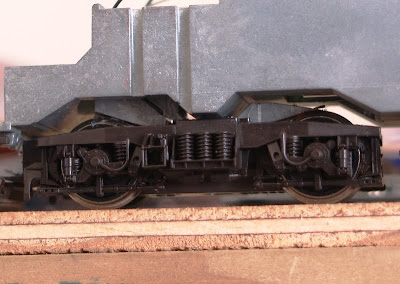A couple of friends have asked me for pictures of where I'm up to with Bad Horn, and I've not got round to taking any recently. I've ground to a halt for want of inspiration and materials (although signals and bufferstops are on their way), and to try and motivate myself I had a look at all I've done so far. And felt utterly disheartened.
I still haven't got the backscene effectively blended into the scenery, although it has improved. I also made a jobs list of outstanding work. So far I've come up with:
- Fit bufferstops
- Fit point motors
- Fit signals
- Weeds
- Repaint hardstanding (I just can't get it the right colour)
- Put fence or crash barrier around hardstanding
- Repaint the signal box
- Bushes for backscene blending
- More trees (left hand end)
- Put a track on the overbridge
And every time I think for a minute, another task comes to mind, and that's without trying to add character and cameos.
I'm actually utterly frustrated with my own abilities, I find the layout looks garish and train set like. It's too shallow (only 300mm deep) which leads to most of the visual problems. Still, I'm determined to complete this one, so just gotta keep plugging away.





























